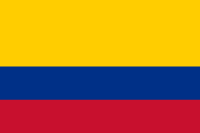
Photo from wikipedia
This study assesses the potential human health risks posed by six heavy metals (Hg, As, Pb, Cd, Cu, and Zn) found in five of the most consumed fish species (Mugil… Click to show full abstract
This study assesses the potential human health risks posed by six heavy metals (Hg, As, Pb, Cd, Cu, and Zn) found in five of the most consumed fish species (Mugil incilis, Centropomus undecimalis, Cathorops mapale, Eugerres plumieri, and Elops smithi) collected by the riverine population living in Ciénaga Grande de Santa Marta (CGSM), the largest estuary in Colombia. Metal concentrations were low compared with those reported in other regions around the world and the maximum value established by international monitoring organizations. The estimation of the potential risk (HQ) indicated that Cu and Hg could generate negative effects in groups of women of childbearing age (WCA) and the remaining population (RP), because they exceeded their related reference doses, with HQ values > 1; however, Cu and Hg concentrations were not high in fish and EWI, MFW, or MeHgPSL values shows that there is no evidence of a potential health risk from MeHg exposure in the study population. Therefore, the recommendations are to establish continuous monitoring of heavy metals together with strategies that address the high fish consumption, as well as to implement mechanisms for the mitigation of contamination of the watershed, to ensure the safety of organisms in the ecosystem and human health, not only of populations who depend on aquatic resources in the area but also of those that market and consume these resources in the Colombian Caribbean.
Journal Title: International Journal of Environmental Research and Public Health
Year Published: 2020
Link to full text (if available)
Share on Social Media: Sign Up to like & get
recommendations!